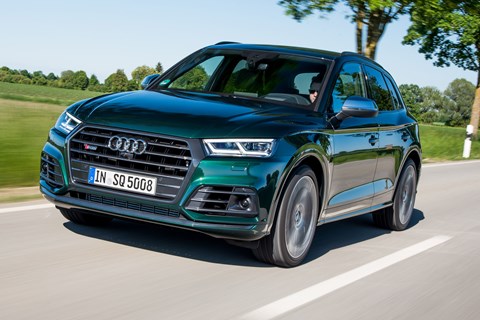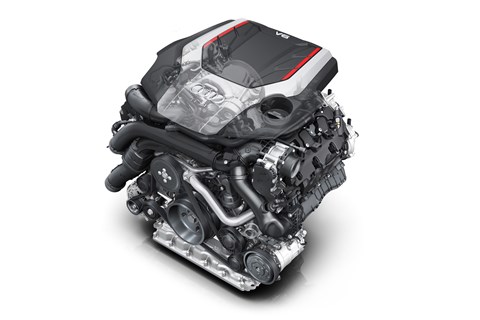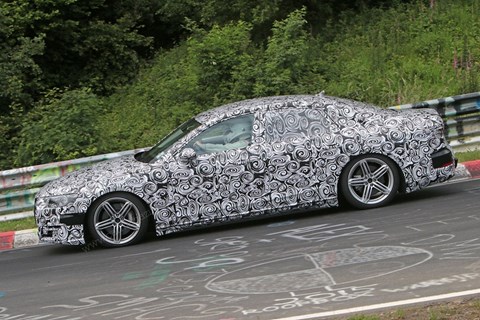► Under the skin of Audi’s new V6
► Just released in new Audi SQ5
► In next-gen hybrid Audi A8 too
There’s a new engine strategy within VW Group.
Responsibility for V6 engines is being concentrated at Audi’s Neckarsulm facility, where 2500 engineers are charged with developing both the Vee engines and fuel cell technology, under the direction of the recently appointed Dr. Franz Bäumel.
Responsibility for V8 petrols now lies with Porsche, with both marques – and one assumes others within the VW Group such as Bentley and Lamborghini – tuning the engines to their own characteristics.
New engine era kicks off with 3.0 V6
The first fruit of this new strategy is the 2995cc V6 nestling under the new Audi SQ5’s bonnet (below). There’s also a 2.9-litre version for the RS5, with its swept volume decreased by 100cc to cope with the additional stress of its 588bhp output.
In the SQ5, the V6 develops 349bhp between 5400 and 6400rpm and 369lb ft from 1370 to 4500 rpm.

Click here to read CAR’s first drive of the 2017 Audi SQ5
Unusually for a V6 it has a 90° block angle, rather than the more traditional 60°, with a balance shaft to compensate for the torque inertia and promote smooth running. This design also helps lower the centre of gravity as well as improving packaging and catalyst layout.
Weightwatchers diet pays off
Thanks to its aluminium construction, the engine weighs just 172kg, with deep skirt steel cylinder liners and newly developed rings for the aluminium pistons to reduce friction losses.
As is becoming the norm, the twin-scroll turbocharger is mounted within the vee with the exhaust branches from both cylinder banks running separately, until they merge ahead of the turbine wheel. It’s this design that improves the exhaust gas flow, resulting in the impressive low-down torque response.
Meanwhile, the exhaust manifold itself is integrated into the cylinder head, so that the manifold is flushed by coolant allowing the engine to heat up more rapidly and, when warm, reduces exhaust temperatures.

Any other noteworthy trick tech in the new V6?
There’s the latest version of Audi’s valvelift system (AVS) that closes down four cylinders under partial load. Together with the centrally located injectors, that creates what Audi describes as its ‘B-cycle’ combustion process; effectively a development of the Miller Cycle.
By artificially shortening the compression phase, it creates a higher base compression ratio. Combined with a power stroke that is relatively longer than the compression stroke this results in more efficient combustion and improved engine efficiency.
Under partial load, the AVS enables a very short intake opening of 130° of camshaft angle, coupled with closing the intake valve early, thereby shortening the intake phase. At higher loads the system switches to a camshaft profile with a longer opening time and larger valve stroke, with the engine operating at its normal 11.2:1 compression ratio.
New engine to be a part of future hybrid powertrains, including in the next Audi A8
Bäumel was keen to stress that the engine has been designed from the offset as part of the group’s hybridisation strategy that will see further progress when the new Audi A8 (below) is rolled out in summer 2017.

In that application, the V6 will be mated to a belt-driven integrated starter-generator that will allow engine-off coasting for up to 45 seconds between 18 and 100mph saving a potential 0.7 litres for every 62 miles on the current NEDC cycle.
Engine-off coasting can only be applied to cars fitted with DSG or fully automatic transmissions, but will roll out across the entire Audi portfolio, including diesel, by the end of this decade.
Click here for more automotive technology news